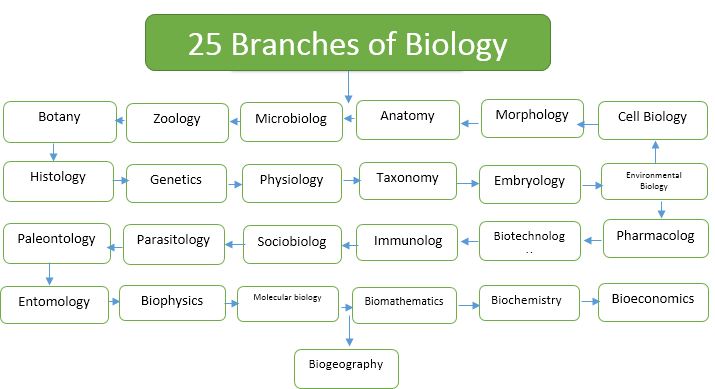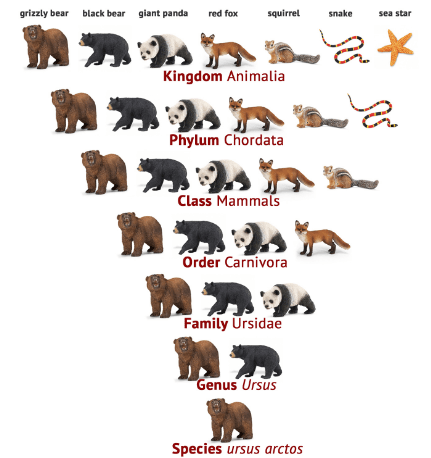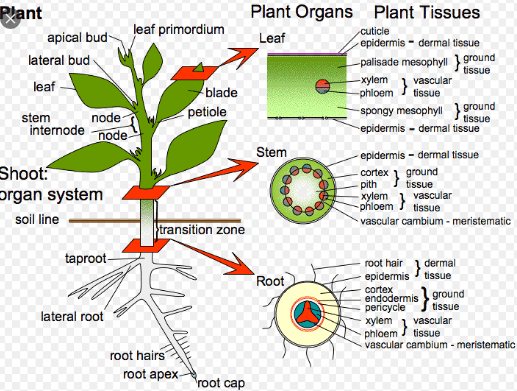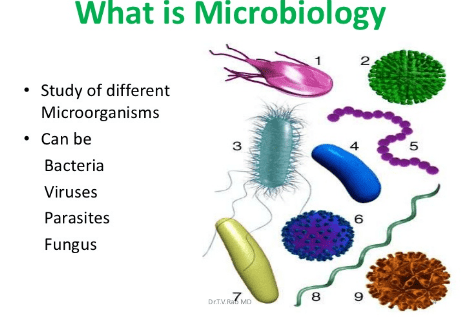25 Different Branches of Biology
What are the different branches of biology and their meaning?
Biology is the study of living things and organisms and their interactions with the environment. while an organism is defined as any living thing in the world and all living things have certain characteristics. botany, zoology, mycology microbiology, and anthropology, etc. are some examples from 25 branches of biology.
defined as any living thing in the world and all living things have certain characteristics. botany, zoology, mycology microbiology, and anthropology, etc. are some examples from 25 branches of biology.
This Article also Includes:
- Introduction to Biology
- Divisions of Biology
- 25 Branches of Biology List
- Sub-Branches of all Biology major branches
- Lots more
So If You If you Want to Get Great results from This post, You’ll Love this Post.
Keep Reading.
let us describe the biology and 25 branches of biology in more detail…!
Introduction to Biology
Biology is the scientific study of life. The word “Biology” has been derived from two Greek words; Bios meaning ‘life’ and Logos meaning ‘thought or reasoning’. In the course of biology, we will study how man has thought about living things.
Human and animal life is very broad so there are many branches of biology to understand and appreciate nature, it is essential to study the structures, functions, and related aspects of living organisms.
The study of living organisms also provides information and remedies to human problems regarding health, food, environment, etc.
and little introduction leads us to the next topic divisions of biology…!
Divisions of Biology
According to the revised classification are three major divisions or branches of Biology which study the different aspects of the lives of major groups of organisms.
- Zoology
- Botany
- microbiology
What is Zoology?
Zoology is concerned with the scientific study of complete animals  (kingdom Animalia) and considered to be the larger field of biology. the word zoology is derived from the zoo (animals) and ology (the study of). It is the study of the functions, behavior, and ecology of different animals.
(kingdom Animalia) and considered to be the larger field of biology. the word zoology is derived from the zoo (animals) and ology (the study of). It is the study of the functions, behavior, and ecology of different animals.
These animals are multi-cellular, eukaryotic, lack cell walls and are heterotrophs.
when we talk about eukaryotic, you may also like to read about the Difference between Prokaryotic and Eukaryotic Cells.
Sub Branches of Zoology
Zoology is subdivided into six Further branches of zoology which are as follows:
- Protozoology (Study of protozoa)
- Ichthyology (Study of fishes)
- mammalogy (Study of mammals
- Ornithology (Study of Birds)
- Entomology (Study of insects)
- Herpetology (Study of amphibians and reptiles)
What is Botany?
Botany is the branch of biology that purely deals with the study of plants’  life and their anatomy or structure along with physiology (Functions) and environmental factors. moreover, it also includes growth, reproductions, and metabolisms along with some negative perspectives like diseases.
life and their anatomy or structure along with physiology (Functions) and environmental factors. moreover, it also includes growth, reproductions, and metabolisms along with some negative perspectives like diseases.
it also covers the chemical properties of plants kingdom and their evolutionary relationships among taxonomic groups. botany is considered to be the oldest branch of science.
Sub-Branches of Botany
- Taxonomy ( Study of giving Plant Names)
- Anatomy ( Study of Plant Structures)
- Pathology ( Study of Plant Diseases)
- Genetics ( Study of Plant Heredity)
- Physiology ( Study of Plant Metabolism)
- Ecology ( Study of Plant Distribution)
- Palaeology ( Study of Plant Evolution)
- Embryology ( Study of Plant Origin & Formation)
- Morphology ( Study of Plant External Formation)
- Histology ( Study of Plant microscopic examination)
What is Microbiology?
the study of tiny living things is referred to the microbiology. tiny things  mean which usually we can’t see with the naked eye. they are also called microbes, for example, algae, viruses, protozoa, fungi, and bacteria, etc. some microbes are pathogenic to humanity while many others are beneficial to us.
mean which usually we can’t see with the naked eye. they are also called microbes, for example, algae, viruses, protozoa, fungi, and bacteria, etc. some microbes are pathogenic to humanity while many others are beneficial to us.
Sub-Branches of Microbiology and 25 branches of biology
Micro-biology is divided into various pure and applied branches which are as follows:
Pure Sciences Branches:
- Immunology
- Bacteriology
- Mycology
- Genetics
- Protozoology
- Parasitology
- Algology
Applied Science Branches:
- Epidemiology
- Medical Microbiology
- Air Microbiology
- Pharmaceutical Microbiology
- Aquatic Microbiology
- Industrial Microbiology
- Agriculture Microbiology
- Food Microbiology
- Soil Microbiology
Now…!
Let us discuss the big list of Biology Branches. this classification actually leads us to the broader end of biology.
25 Branches of Biology List
In order to study all the aspects of life, these divisions are further divided into different fields and branches as defined below.
- Botany
- Zoology
- Microbiology
- Anatomy
- Morphology
- Cell Biology
- Histology
- Genetics
- Physiology
- Taxonomy
- Embryology
- Environmental Biology
- Paleontology
- Parasitology
- Sociobiology
- Immunology
- Biotechnology
- Pharmacology
- Entomology
- Biophysics
- Molecular biology
- Biomathematics
- Biochemistry
- Bioeconomics
- Biogeography
Definition of Botany
The Scientific Study of Plantlife is called Botany. it also includes fossil plants along with living. furthermore, we will get in touch with the form of the plant, their functions, and also interactions with the environment and classification.
What is Morphology?
This branch deals with the study of forms and word structures of living organisms. this category also includes the system of categorized and rules involved in word formation with their interpretations. in fact, we examine the different categories of morphemes that make up words and different morphological processes. (25 branches of biology)
What is Anatomy?
The study of internal structure (Morphology) along with their arrangement and their relationship with different parts is called anatomy. the anatomy majorly applied to the human body that enables us to understand better how our body works during rest and exercise. for example, the structure of the heart and its functions.
What is Histology?
The microscopic study of tissues of the body and how these tissues are arranged into different patterns of organs is known as histology. It is derived from the Greek word ” Histos” meaning tissues and ” Logia” Knowledge, which is said to be the tissue knowledge regardless of plant and animals.
It is performed under a light or electron microscope by examining thin slices or sections of tissues.
What is Cell Biology?
we know that every living thing in this universe is made up of one or more cells. so, the study of structures and functions of cells and cell organelles is called cell biology. It also deals with the study of cell division. these cells carry out the different functions of life and are produced or divided into other cells.
Physiology
This branch deals with the study of functions of different parts of living organisms.
Genetics
The study of genes and their roles in inheritance is called genetics. Inheritance means the transmission of characters from one generation to the others.
Embryology
It is the study of the development of an embryo in new individuals.
Taxonomy
It is the study of the naming and classification of organisms into groups and subgroups.
Paleontology
It is the study of fossils, which are the remains of extinct organisms.
Environmental Biology
It deals with the study of the interactions between organisms and their environments.
Socio-biology
This branch deals with the study of the social behavior of the animals that make societies.
Parasitology
This branch deals with the study of parasites.
Biotechnology
It deals with the practical application of living organisms to make substances for the welfare of mankind.
Immunology
It is the study of the immune system of animals, which defend the body against invading microbes.
Entomology
It is the study of insects.
Pharmacology
It is the study of drugs and their effects on the system of the human body.
Watch Video About 25 Branches of Biology
FAQ’s (Frequently Asked Questions)
What are the 10 branches of biology?
the 10 branches of biology are as follows: Botany, Zoology, Microbiology, Anatomy, Morphology, Cell Biology, Histology, Genetics, Physiology, Taxonomy.
Who is the father of biology?
Aristotle is known as the father of biology. Aristotle was a Greek philosopher In the 4th century BC who traveled the long run to Lesvos for the wildlife.
What branch of science is the human body?
Anatomy & Physiology are the branches of science and biology that study the anatomy of the human body.
5 branches of biology.
biochemistry, cell biology, microbiology, botany, zoology are the major 5 branches of biology.
How many types of biology are there?
botany, zoology, and microbiology fall under the main three types of biology.
What study is biology?
the study of life in which function, structure, origin, growth, evolution, and distribution of living organisms are explored and discussed.
Other Related Biology Topics:





